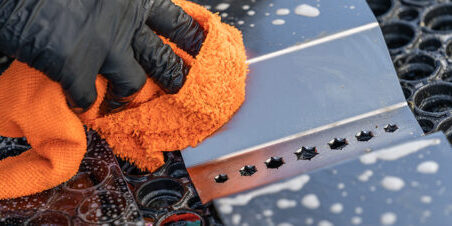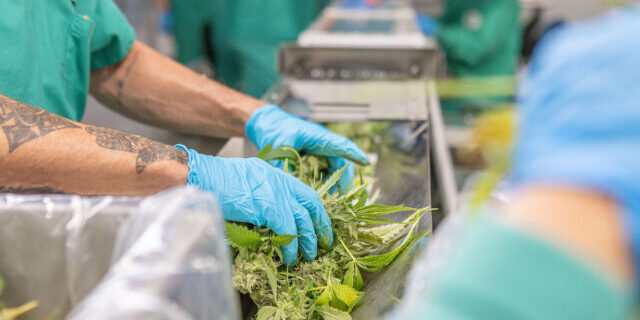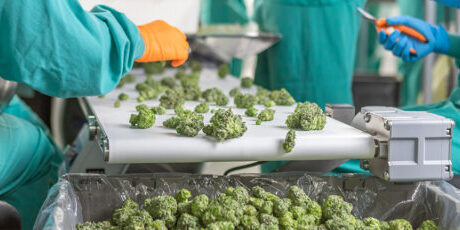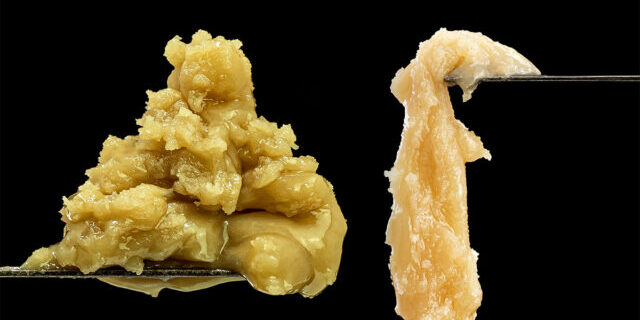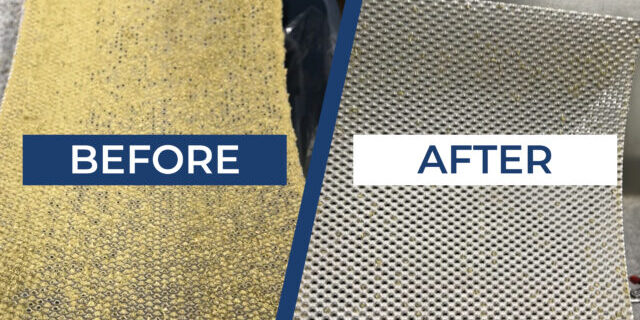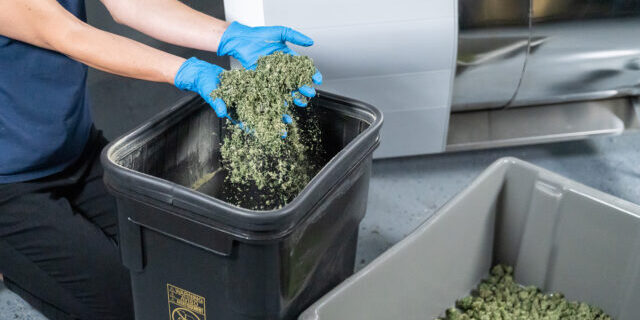How to Achieve the Ideal Trim-to-Flower Ratio for Your Operation
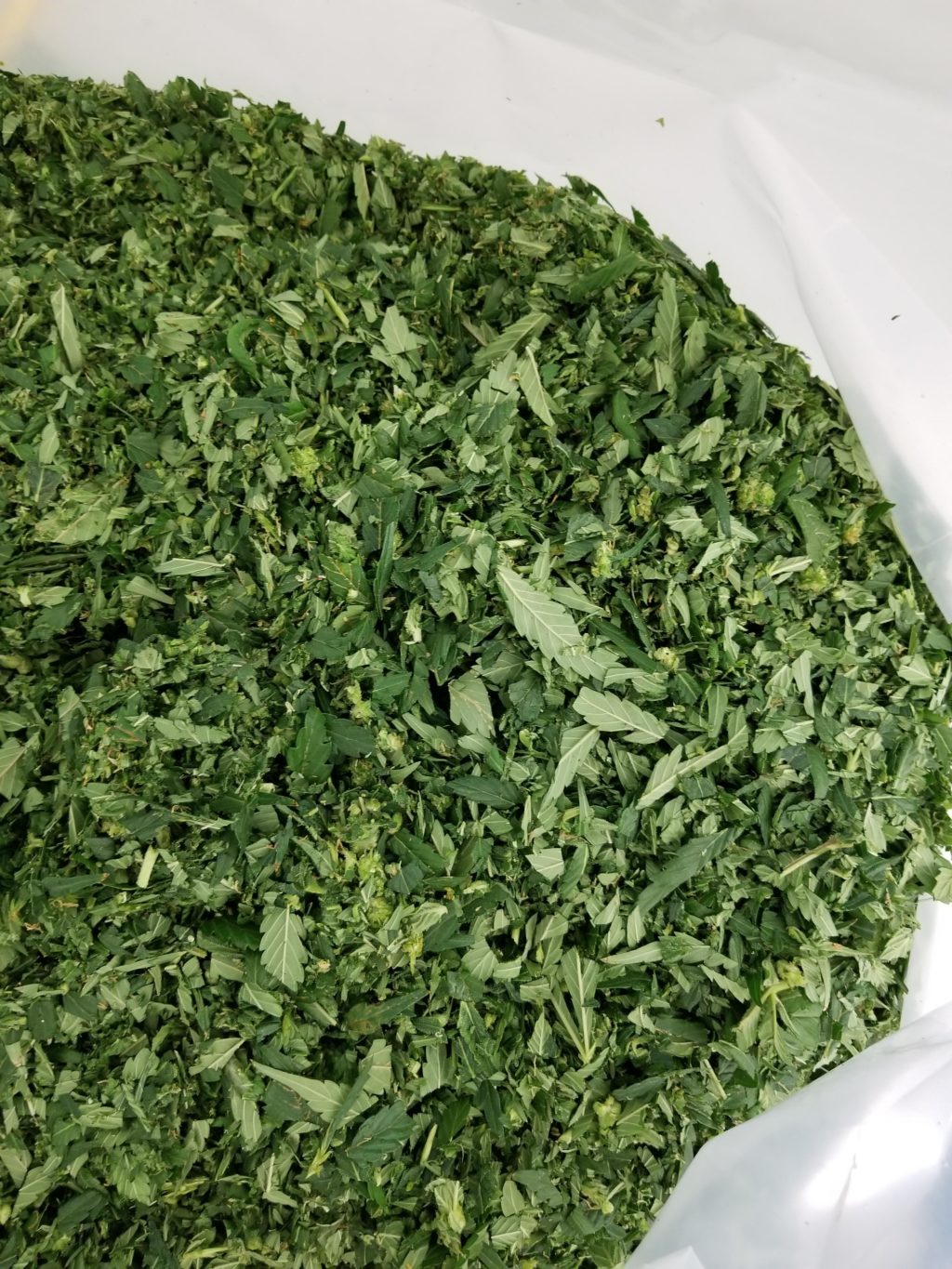
In cannabis processing, the trim-to-flower ratio is a crucial metric for cultivators, affecting both product quality and operational efficiency. However, the trim-to-flower ratio you achieve can vary depending on many factors, from the cultivar you choose to your trimming process.
Based on insights from trimming experts, we’ve created this guide to teach you everything you need to know about the best ratio of trim to flower, the factors that affect it, and how you can improve your trimming and processing outcomes.
With the right strategy, you’ll boost the quality of your product, take your profitability to the next level, and preserve your brand’s reputation.
What is the Trim-to-Flower Ratio?
In the cannabis industry, the trim-to-flower ratio is a metric that quantifies the weight or volume of cannabis trim produced during the trimming process relative to the weight or volume of the cannabis flower that remains. For instance, a 15% trim-to-flower ratio means that 15 grams of trim are generated for every 100 grams of cannabis material, leaving 85 grams of finished flower.
Trim consists of the plant material removed by the trimming process. This includes sugar leaves, stems, and other non-bud components. Although the plant matter included in trim is not as visually appealing, it can still contain cannabinoids and terpenes, making it valuable for secondary products and extracts.
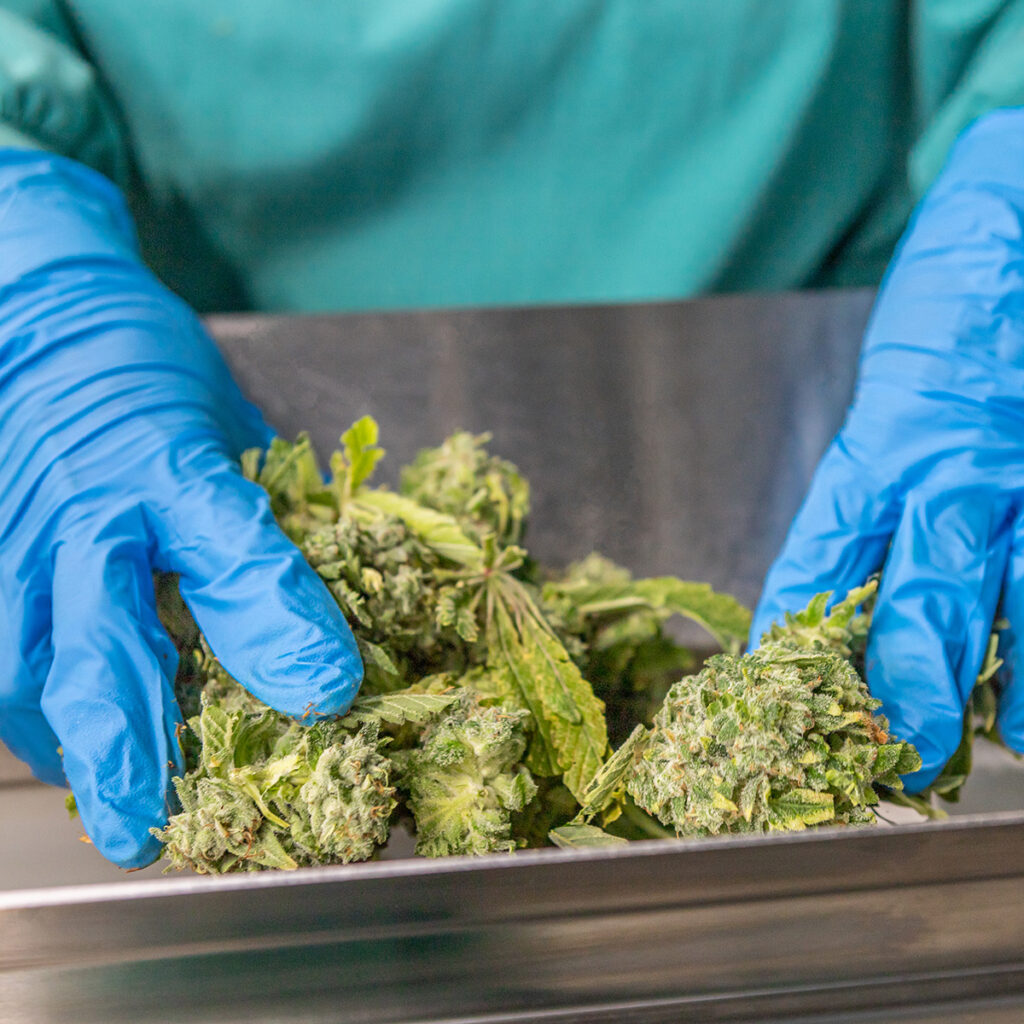
Measuring the trim-to-flower ratio is important for several reasons. First, it provides insight into your processing efficiency. A higher trim ratio may indicate over-trimming, leading to an unnecessary loss of marketable flower. On the other hand, a low ratio could suggest under-trimming, which might reduce the product’s visual appeal and lower its overall value.
This ratio also impacts cost control and revenue. Excessive trimming increases labor costs if employing hand trimmers, and leaves less flower left to sell. Trimming too little impacts quality and visual “bag appeal” as well as reduces the amount of trim available for additional revenue streams from extracts or infused products. Maintaining an optimal balance helps maximize both efficiency and profitability.
Finally, tracking this ratio supports quality assurance. Well-trimmed flower is more visually appealing to consumers, maintains its potency, and fetches a higher price. High-quality trim can be repurposed to enhance profitability.
Typical Ratios for Machine and Hand Trimming
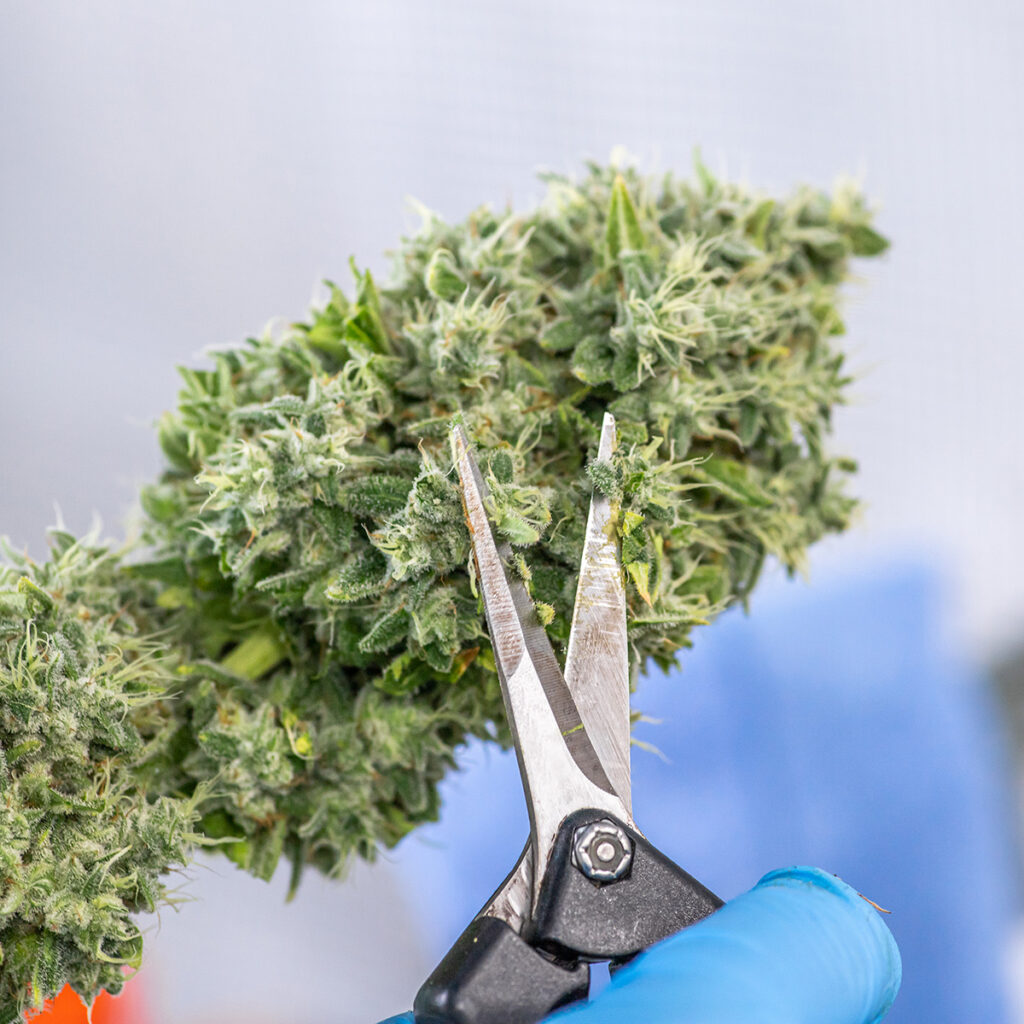
Several factors can affect the trim-to-flower ratio, including whether you choose hand trimming or machine trimming in your process, and the moisture content of your material. Modern cannabis trimming machines like the M108S are engineered to deliver precise, consistent results while minimizing waste. With machine trimming, indoor trim-to-flower ratios typically range from 15%–35%, depending on factors like the strain, material preparation and conditions, as well as specific machine settings.
The trim-to-flower ratio can also vary based on the particular machine used and its settings. Well-calibrated and high-quality trimming machines are designed to remove excess trim efficiently while maintaining the flower’s structure and visual appeal. This helps achieve a consistent ratio without unnecessary loss of marketable product.
The Benefits of Machine Trimming
One key advantage of machine trimming is its consistency. Unlike hand trimming, which can vary between workers, machines deliver uniform results at a faster rate. For example, the Mobius M108S bud trimmer uses three independent helical blade cartridges to improve trimming speed and deliver a scissor-like cut, while minimizing the time flowers spend in the tumbler.
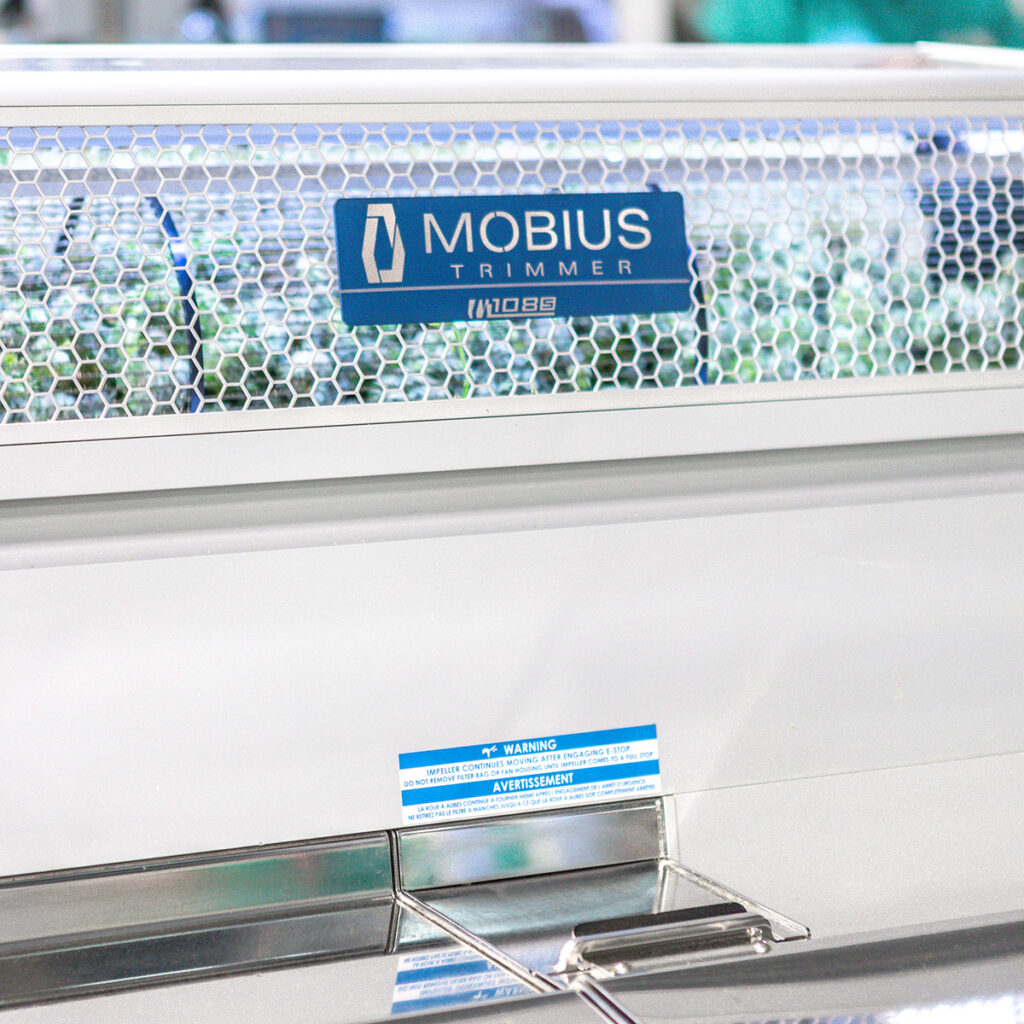
The AirThread tension tumbler increases blade access by 50% compared to traditional sheet-metal tumblers, allowing for a closer, more efficient trim. Additionally, the machine’s variable function system enables precise adjustments to accommodate different strain types and moisture levels. An integrated separation system with smoothed internal surfaces moves trim through the machine gently, helping to preserve its quality for use in extracts and other products, as well as maintaining GMP compliance.
Machine trimming also offers a range of cost benefits. Reducing reliance on manual labor shortens processing times and lowers labor expenses. This efficiency allows producers to scale operations more effectively while maintaining product quality and consistency.
Hand Trimming: Cost and Labor Considerations
Hand trimming, commonly used by boutique and smaller cannabis producers may result in similar trim-to-flower ratios as machines, though the quality and speed of processing will vary based on a few factors.
With hand trimmers typically paid by the volume they process by weight per pound, it is common for workers to move fast, processing as much material as they can in a single workday. This often leads to variability in the trim levels of the flower, risking higher trim-to-flower ratios.
To increase the aesthetic quality of cannabis buds, hand trimmers often remove more plant material than necessary. Additionally, excessive handling during manual processing can lead to trichome loss, as the delicate resin glands are prone to damage from repeated contact and easily stick to gloves, trays, and trimming scissors. This not only affects the appearance of the finished flower but can also reduce the total cannabinoid and terpene content in the flower, as well as extracts made from the trim.
Hand trimming also carries higher labor costs. Skilled trimmers command higher wages and the time-intensive nature of manual processing limits scalability. While these costs may be justifiable for small-scale, craft operations catering to niche markets, they can erode profitability for larger cultivators aiming to meet broader consumer demand.
Factors That Affect the Trim-to-Flower Ratio
Although industry averages for trim-to-flower ratio usually fall at around 15%–35%, there’s a lot of variation that can occur. Some of the most significant factors to consider include the strain, cultivation techniques, material preparation, moisture content, and trimming style.
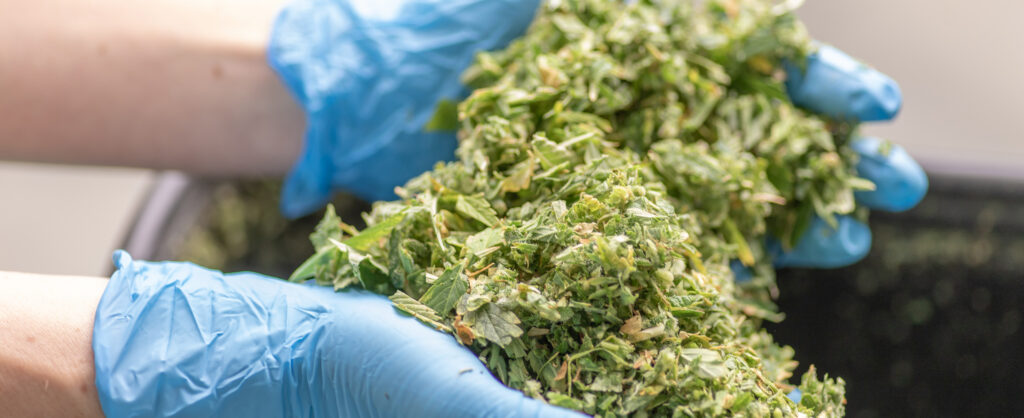
Strain-Specific Factors
Cannabis strains vary widely in their growth patterns, bud structures, and the amount of leafy material they produce. For example, indica-dominant strains often produce dense buds with fewer sugar leaves. This leads to lower trim-to-flower ratios. In contrast, sativa-dominant strains tend to have lighter, airier buds and more abundant foliage, resulting in higher ratios. Some strains can yield anywhere between 25%–40% of the bud weight as usable trim.
Cultivation Practices
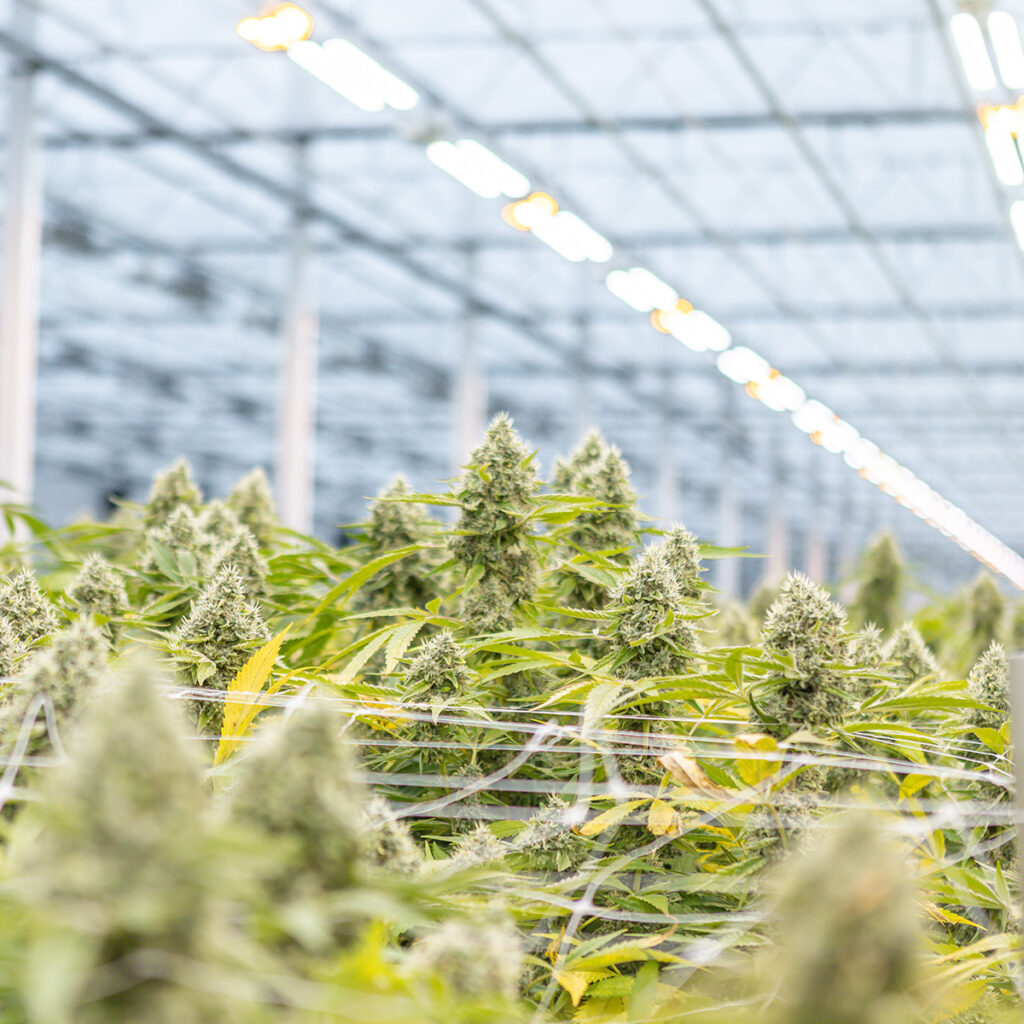
Cultivation techniques can also affect the amount of trim produced. Practices like pruning (removing unnecessary branches) and defoliation (removing excess cannabis leaves) reduce the amount of non-flower material on the plant. These techniques focus the plant’s energy on bud development, which maximizes the flower quality but also lowers the ratio of trim to flower.
Environmental factors also play a role. For example, indoor cultivation typically allows for greater control over conditions before a harvest. The result is tighter, more compact buds with less to trim. Outdoor or greenhouse-grown cannabis often produces looser buds with more sugar leaves. This then leads to slightly higher trim-to-flower ratios, with less upstream defoliage completed due to higher volume and less control during the growing process.
Trimming Style and Processing Decisions
The choice between wet trimming and dry trimming also affects how much trim is produced. Wet trimming, performed immediately after harvest, often results in a higher ratio of trim to flower because sugar leaves are easier to remove when moist. Dry trimming, done after the plant has cured, tends to preserve more leafy material. Based on the decision to wet or dry trim, maintaining proper moisture content levels of your material will be one of the biggest factors to influence the overall trim quality and trim-to-flower ratio.
Trimming style also plays a crucial role. Light trimming, where only the largest fan and sugar leaves are removed, typically results in lower trim-to-flower ratios. It’s often used for pre-roll preparation or products intended for extraction. In contrast, heavy trimming focuses on creating tightly manicured buds for premium smokable flowers. This leads to a higher trim ratio because more material is removed.
The Effect of End Goals on the Trim-to-Flower Ratio
The end goals you have for your cannabis plant are another factor that might influence the trim-to-flower ratio. How you plan to use the product will usually determine how you nurture plants during the flowering stage and dictate your trimming processes.
If you’re selling cannabis buds directly, you’ll focus on premium flower sales. As such, meticulous trimming is often necessary to create a visually appealing product. This can lead to higher trim ratios.
On the other hand, if you’re going to be using your cannabis plants for tincture products, extracts, edibles, or pre-rolls, a looser trim might be appropriate, as cannabinoid, terpene, and potency levels are more important than aesthetics.
Steps to Optimize the Process for Better Trim-to-Flower Ratios
Once you have your strain chosen, your cultivation practices dialed in, and product end goals determined, you can dial in your trimming process to yield better results. You can’t always control the exact ratio output, but you can improve the trim-to-flower ratio through a few processing techniques while trimming for better results.
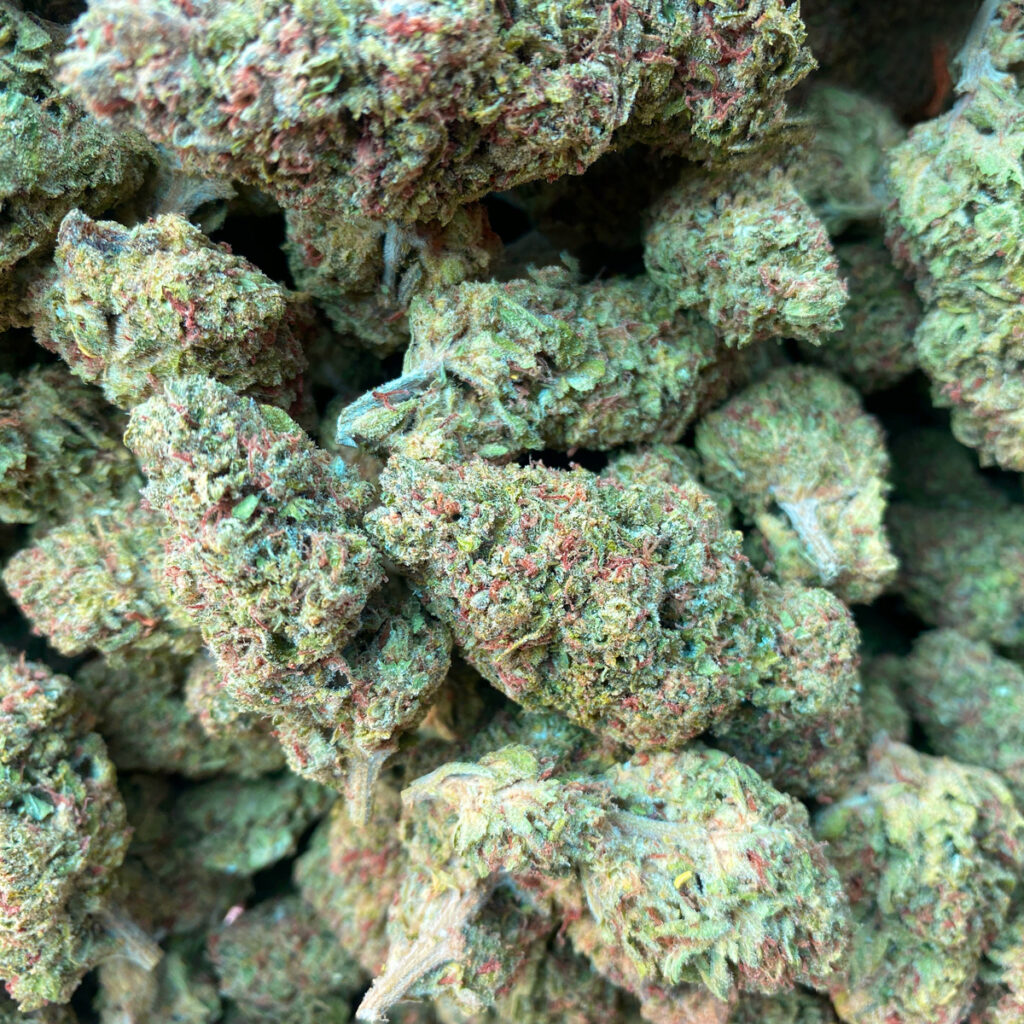
1. Run a Test Batch
Before committing an entire harvest to a specific trimming workflow, it’s wise to run a test batch. This allows you to evaluate how the machine interacts with your specific strain, moisture levels, and bud structure. By analyzing test batch results, you can adjust machine settings to achieve the optimal balance between preserving high-quality flower and getting maximum yields, all while generating usable trim.
2. Dial in Trimmer Settings
Proper machine settings related to the specific cultivar’s characteristics is one of the most effective ways to control your trim-to-flower ratio. Adjustments to the following trimmer settings can fine-tune your results:
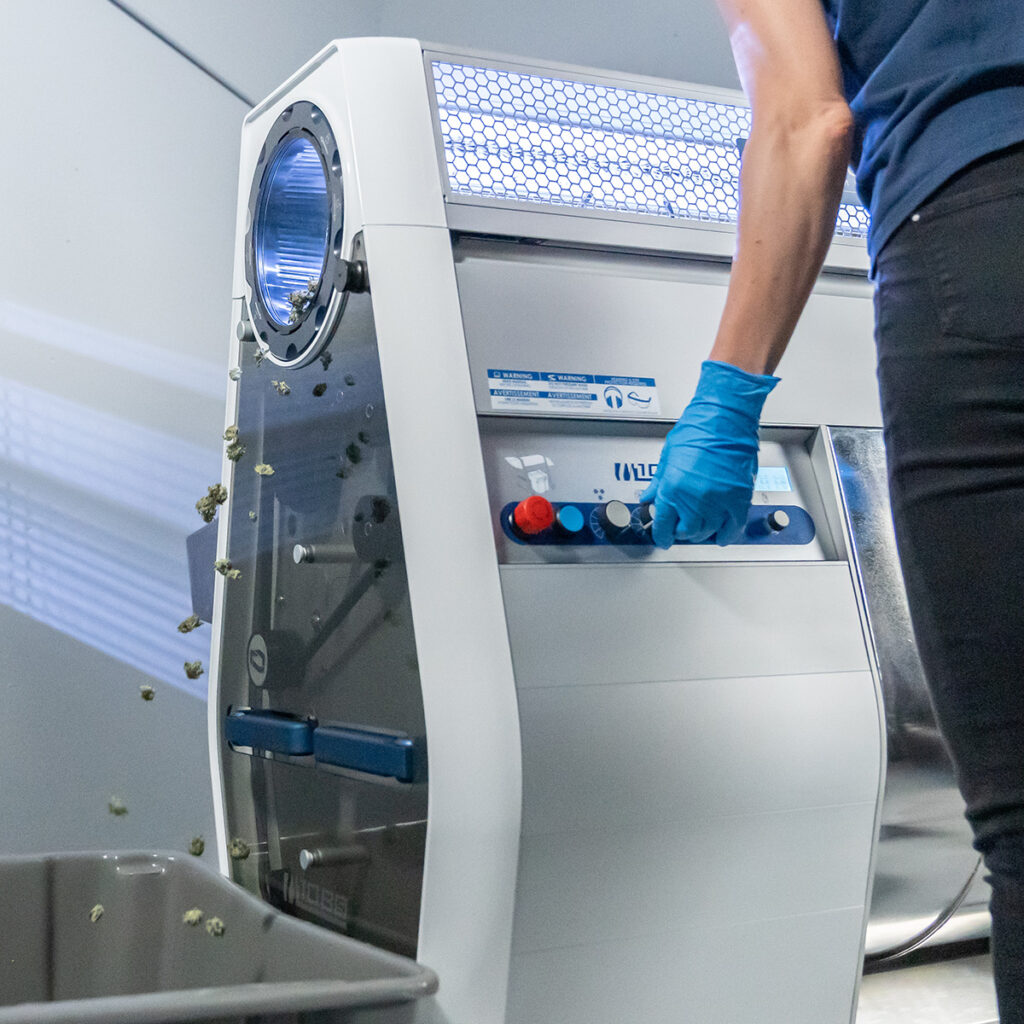
- Vacuum Suction: Ensuring the right level of suction prevents delicate flower from being over-trimmed while still removing excess leaf material efficiently.
- Tumbler Speed: Faster tumbler speeds may result in excessive trim loss, and may lead to trichome breakage and loss. Slower speeds can provide a more controlled, scissor-like cut, and more contact time with the blades.
- Blade Speed: Higher blade speeds can lead to aggressive trimming and potentially increase the trim output. Slower speeds are gentler, which helps preserve more flower.
- Trimmer Tilt: Adjusting the tilt of the trimmer affects how quickly the flower moves through the machine and can influence both the trim quality and the final output.
By systematically testing these settings, you can find the optimal balance that maximizes flower retention while ensuring a clean, consistent trim. Additionally, once you have your trimming machine settings dialed in according to a specific strain, you can benchmark those settings to maintain a consistent trimming process across different harvests of the same cultivar type.
3. Pre-Sort Your Flower
Sorting your flower before trimming is another way to improve your trim-to-flower ratio. Running batches with uniform bud sizes ensures that trimming is consistent across all flowers. Mixing small and large buds together can lead to uneven results — larger buds may risk over-trimming, while smaller ones may require additional passes or touch-ups.
Grouping buds of similar size allows the machine to perform more predictably. This means better efficiency and a more controlled trim output.
4. Monitor Processing Room Conditions
The environmental conditions of your processing room — especially temperature and humidity — can directly impact how your flower trims. Ideally, your trimming room should be maintained within an optimal range:
- Temperature: Keep the room between 60-70°F (15-21°C) to prevent excessive drying or softening of the flower, which can affect trimming precision.
- Humidity: A relative humidity level of 55-60% helps maintain the right level of moisture in your flower, reducing the likelihood of trichome loss while ensuring leaves remain crisp enough for effective trimming.
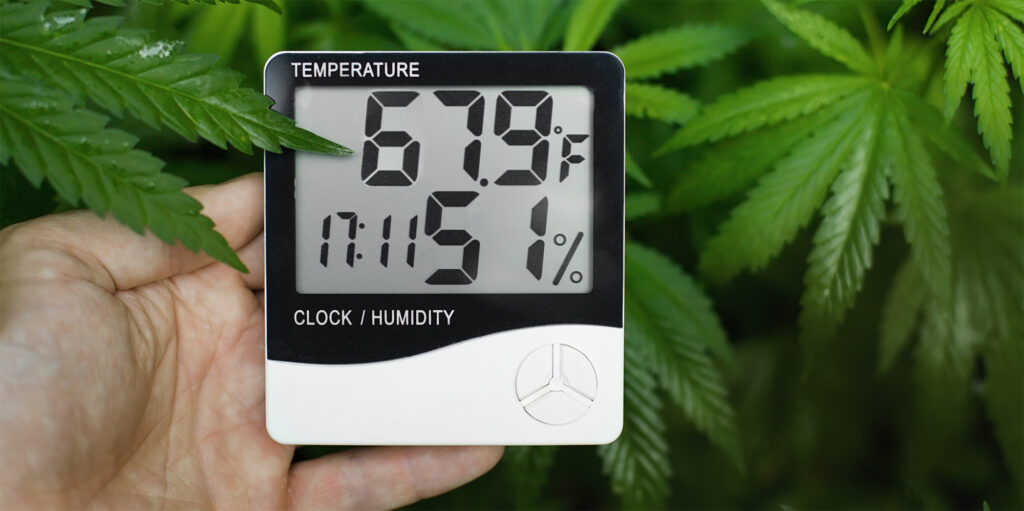
Maintaining stable environmental conditions prevents buds from becoming too brittle or too soft, both of which can negatively affect trim-to-flower ratios.
5. Check Moisture Content & Drying Practices
Proper drying and curing practices significantly influence the way your flower trims. If the moisture content is too high, sugar leaves may be too pliable and difficult to remove cleanly. Conversely, overly dry buds can become brittle, leading to excessive trichome loss and unwanted flower breakage.
- Ideal Moisture Content: Target a moisture content of 11-14% for the best trimming results.
- Drying & Curing: A slow, controlled drying and curing process ensures that both flower and trim retain their cannabinoid and terpene profiles, preserving product quality across the board.
Testing the moisture content of your flower before trimming helps ensure optimal processing conditions and prevents waste.
6. Utilize Tandem Trimming for Maximum Efficiency
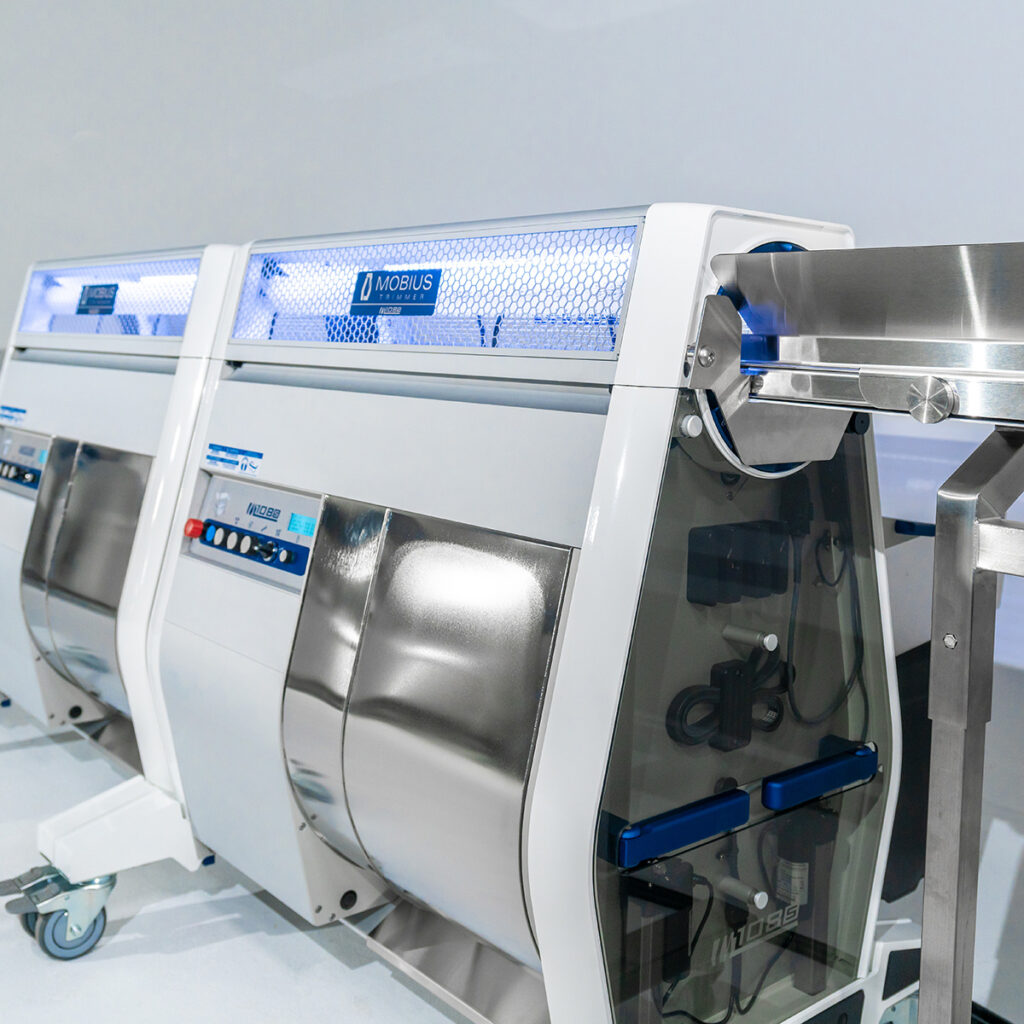
For commercial-scale operations, tandem trimming — using multiple machines in sequence — can refine the trim-to-flower ratio. Tandem trimming allows the flower to spend less time in the machine, so flower gets trimmed faster and with more precision. By splitting the workload between two trimming machines attached front to back, each machine performs part of the job. This reduces the time the product spends in the machine, minimizes trichome loss, and preserves the quality and structure of the bud.
With shorter passes and faster feed rates, tandem systems reduce friction, impact damage, and over-processing — helping you achieve a cleaner cut and more consistent trim-to-flower ratios. It’s a scalable solution for high-throughput environments where preserving cannabinoid-rich flower is just as important as efficiency.
Impact of the Trim-to-Flower Ratio on Revenue
The trim-to-flower ratio you achieve impacts how you convert raw plant material into revenue. Beyond its impact on flower yields, the ratio directly influences the value of trim, which can be used to create high-margin secondary products like concentrates, edibles, and infused pre-rolls. Optimizing this ratio can significantly enhance profitability by reducing waste and increasing the output of marketable material.
While premium flower typically commands the highest price per gram, trim is far from waste. That’s why it’s important to choose the right trimming machine to preserve valuable trim.
Trim, especially sugar leaves, contains a significant amount of cannabinoids and terpenes. This makes it a valuable input for kief and extract production, including concentrates, oils, and infused items. These products cater to growing consumer demand. For instance, the cannabis-infused products market is forecast to reach a value of $150.51 billion by 2030.
By maintaining an optimal trim-to-flower ratio, cultivators can balance high-quality flower production with the ability to repurpose trim effectively. With carefully preserved trim, cultivators can leverage:
In-House Extraction: Cultivators can choose to process trim into concentrates or oils in-house by collecting kief from the trim. This approach allows them to control product quality and diversify their offerings, increasing revenue streams. Products like distillates and hash derived from trim often yield higher profit margins than selling the raw material.
Partnerships with Extraction Companies: Cultivators who lack in-house extraction capabilities can sell trim to third-party extraction companies. Trim typically fetches lower prices per pound than flower but remains a profitable byproduct, especially when processed efficiently.
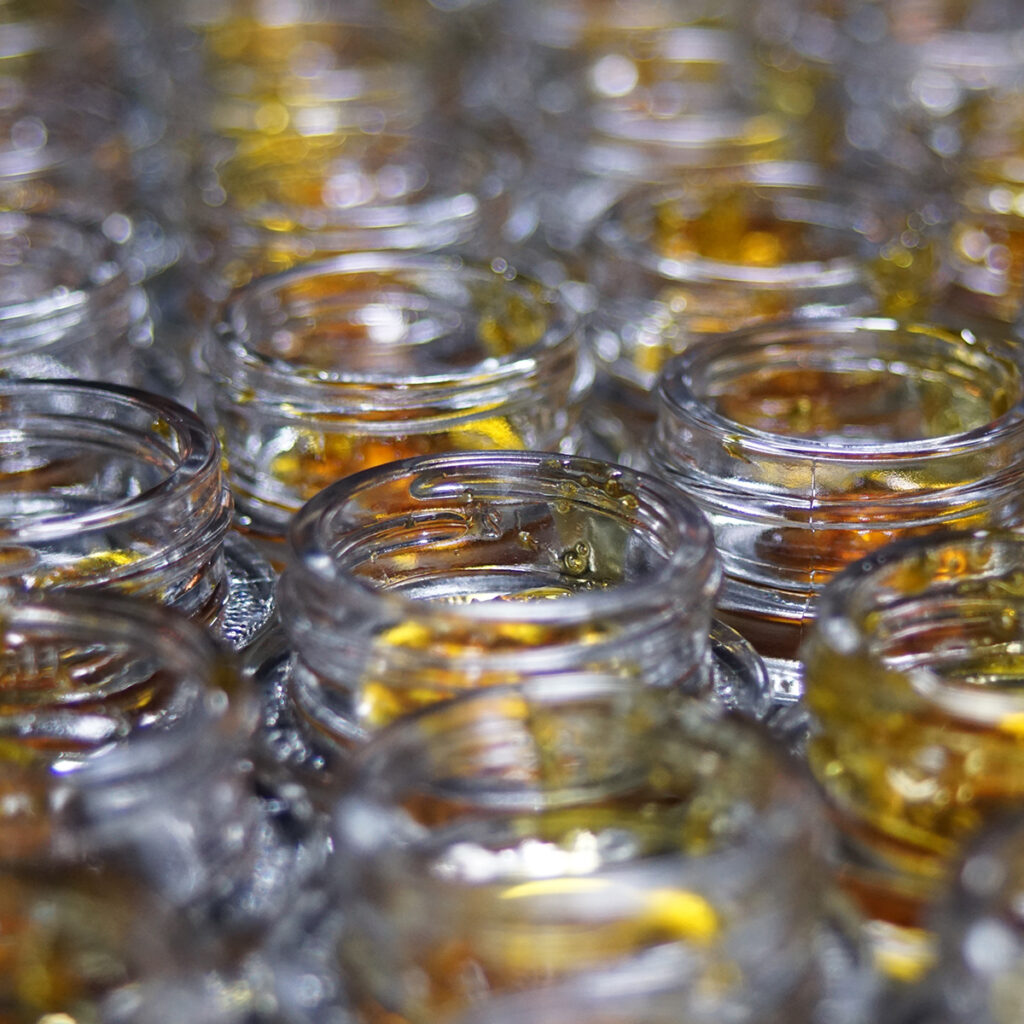
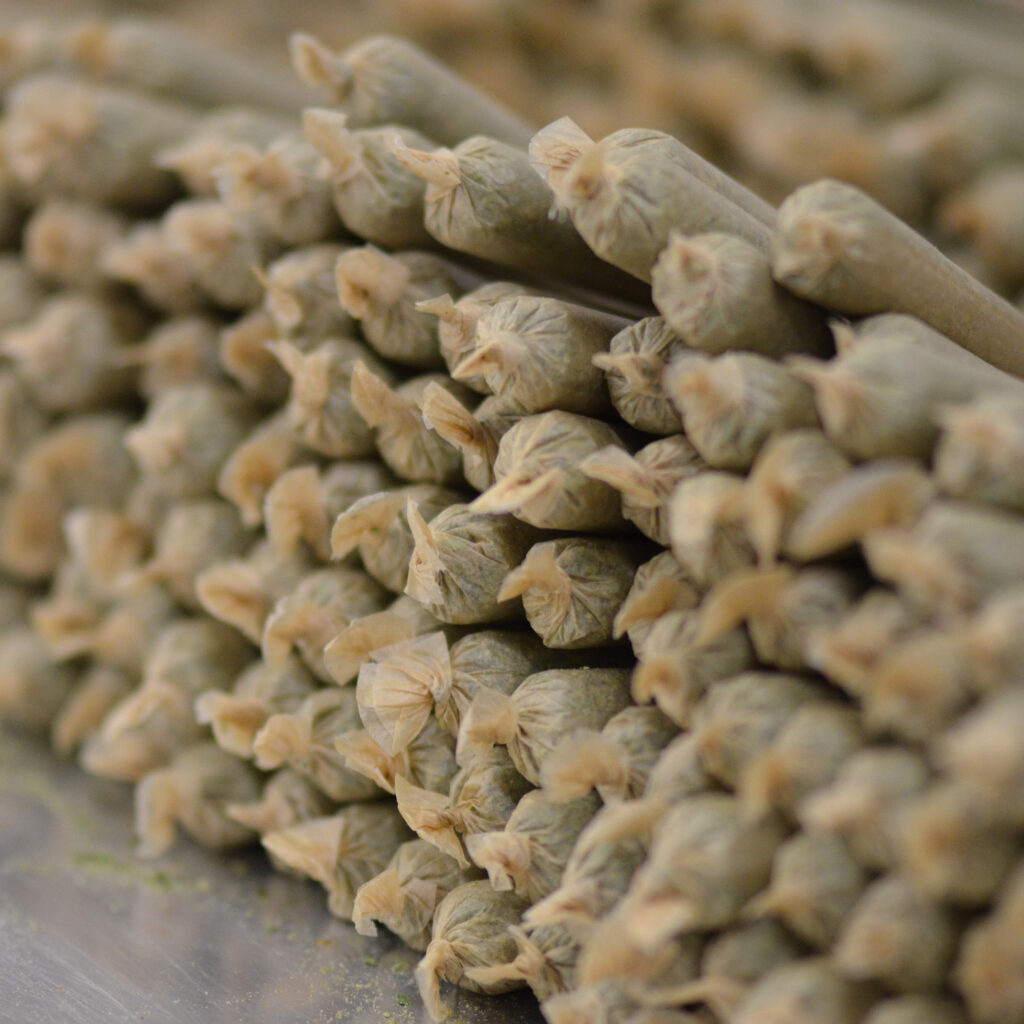
Pre-Roll Production: Trim can also be used to produce infused pre-rolls, a consumer-friendly product with broad appeal. By extracting the kief from the trim, it can be added to pre-rolls for an enhanced product. This method adds value to trim that might otherwise be discarded.
Efficiency and Labor Cost Considerations for the Trim-to-Flower Ratio
While hand trimming remains popular among some cultivators, that’s often because many people still believe the myths about machine trimming and think machines can’t offer the same level of precision. However, hand trimming is time-consuming, expensive, and not always guaranteed to deliver better results than machine trimming.
Machine trimming has revolutionized post-harvest processing in the cannabis industry, offering unparalleled efficiency and consistency. For commercial growers handling harvests at scale, machine trimming is a game-changer, streamlining operations, reducing labor demands, and delivering larger cost savings.
Machine trimming can:
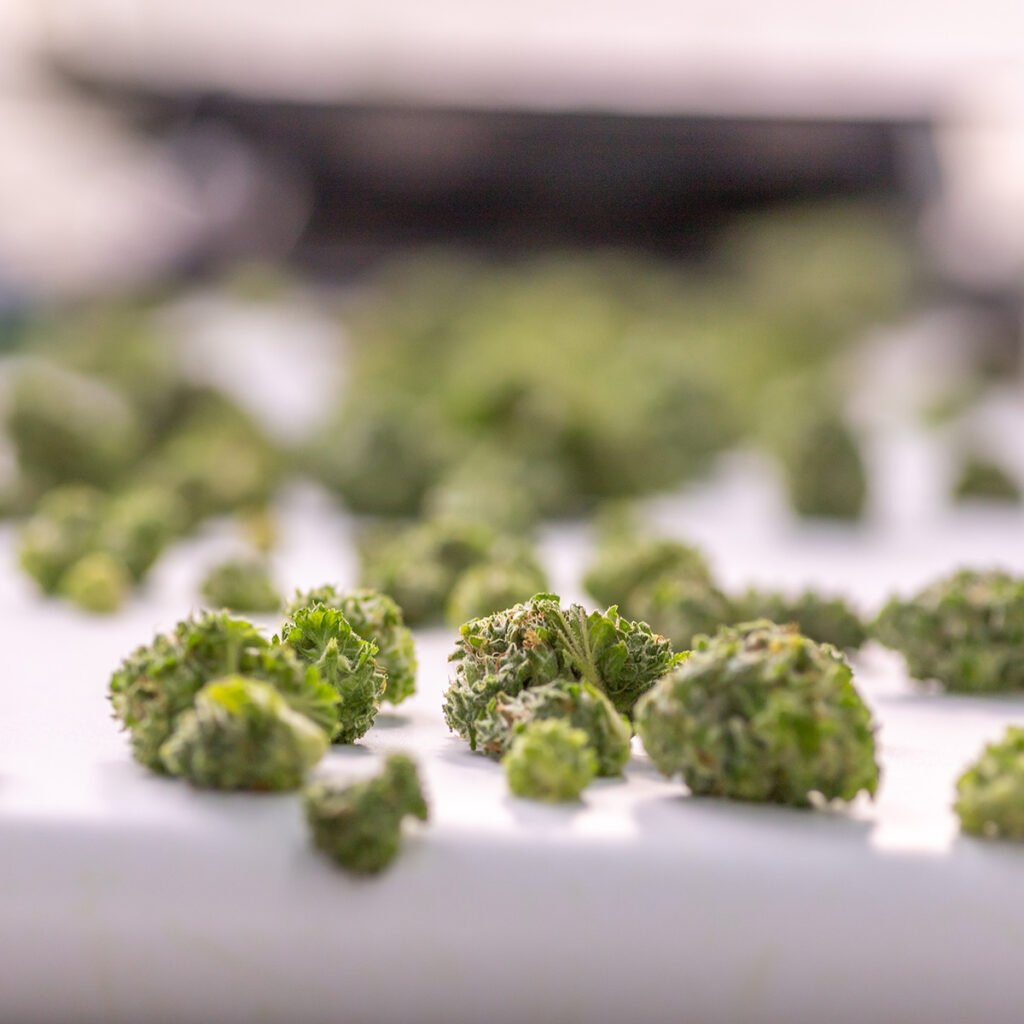
- Streamline operations: Modern trimming machines, like those offered by Mobius, are designed to process substantial volumes of cannabis quickly and accurately. Where hand trimming can take hours or days to finish a batch, a high-capacity machine can process large volumes in a fraction of the time. This speed is invaluable during harvest when time-sensitive processing is crucial.
- Maintain consistency: Machine trimming also ensures consistent results across all batches, reducing the variability caused by human error. This consistency is crucial for maintaining the high-quality uniformity consumers expect, especially in premium markets. Precision-engineered components in modern machines gently handle buds, minimizing damage to trichomes and preserving the cannabinoid and terpene content that defines product quality.
- Reduce costs: Hand trimming is notoriously labor-intensive, requiring teams of skilled trimmers who can process limited amounts of flower per day. Labor costs can quickly add up. By contrast, machine trimming can handle the work of dozens of hand trimmers. This lowers direct labor expenses and reduces associated costs like training and management fees.
While the initial capital expenditure of investing in the right trimming machine may seem high, the rapid savings and ROI in labor and increased processing capacity often largely outweigh the upfront cost. Many machines pay for themselves within a single harvest cycle by significantly lowering per-pound processing expenses.
Optimizing Trim-to-Flower Ratio
In cannabis processing, the ratio of trim to flower is an important factor cultivators can’t afford to overlook. Achieving the right balance improves product quality, maximizes yield, and boosts profitability. It’s not just about reducing waste — it’s about making the most of every harvest, no matter the final product.
While several factors can affect the trim-to-flower ratio, your trimming process and the equipment you use play a significant role. Mobius’s advanced trimming solutions are specially designed to minimize waste, preserve trichomes, and deliver consistent results.
For cultivators looking to refine their trimming process, investing in the right equipment can make a measurable difference. Contact Mobius to find out how we can help you optimize efficiency, increase product quality, and open up new revenue opportunities.
